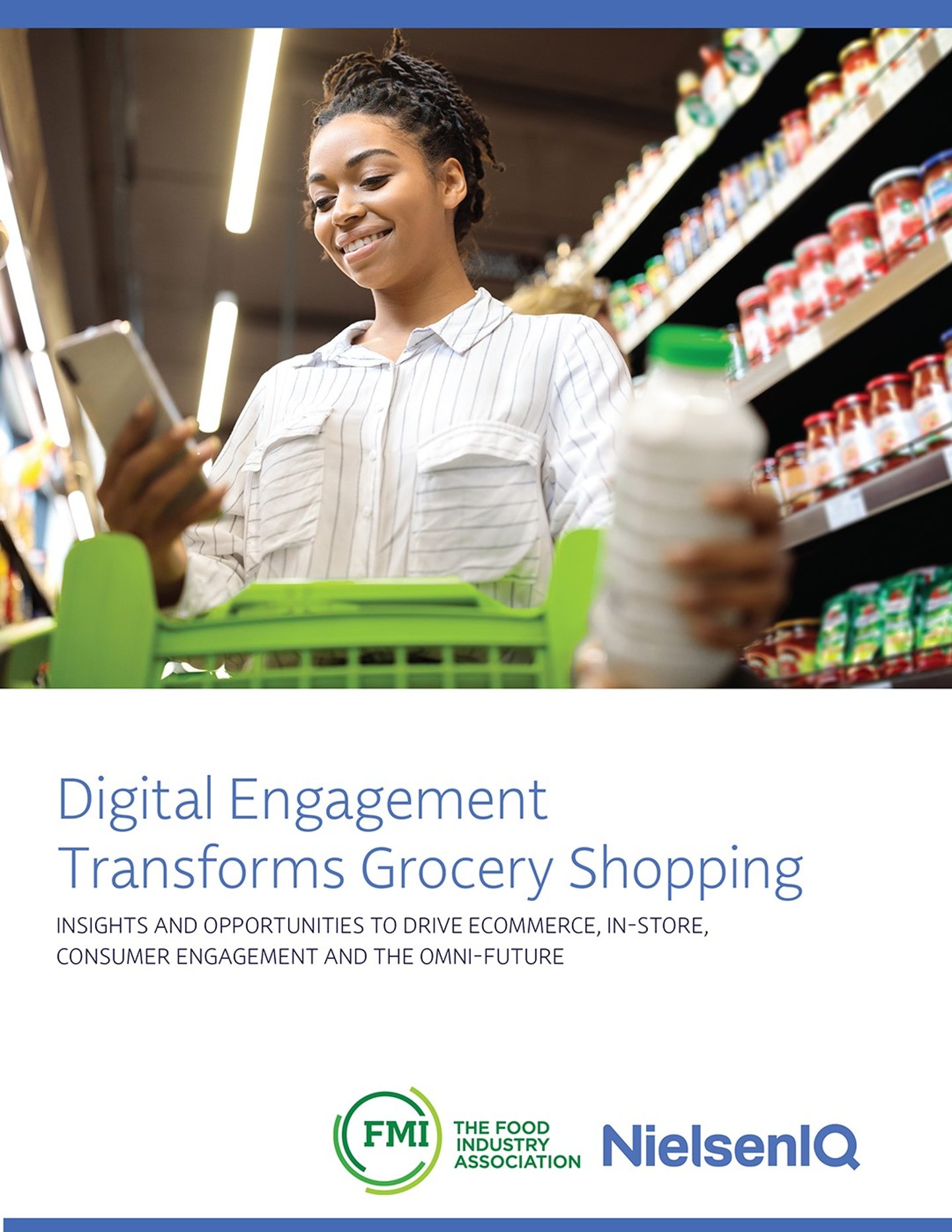Why ‘Channel Fluidity’ Will Be Key to Grocery Growth
Even before the pandemic that put online grocery shopping literally at millions of customers’ feet for the first time, FMI - The Food Industry Association (FMI) and NielsenIQ (NIQ) projected in 2017 that digital spending would top $100 billion by 2025 and comprise 20% of the market. Flashforward those eight eventful years, and that prediction has proven prescient.
According to the report, "Digital Engagement Transforms Grocery Shopping" released during FMI’s recent Midwinter Executive Conference, total digital sales for grocery items are pegged to reach $388 billion for a nearly 25% market penetration by 2027. Indeed, the hypothetical has become reality, with more than 90% of people currently reporting that they buy groceries both in store and online.
Other data points underscore the shift to hybrid ways of shopping that were hypothetical not that long ago. For example, researchers found that sales in physical stores are dominant at 80% but are experiencing relatively flat growth, while online shopping is growing at a faster clip. The digital side is forecasted to expand at a CAGR of 12% over the next few years.
Opportunities remain for grocers looking to boost their omnichannel sales. For example, the report pointed out that food remains a high-potential e-comm area, as shoppers have already demonstrated a penchant for buying items in nonfood categories.
The report also delved into the hybrid audience. According to the research, “online-reliant” shoppers are typically Millennial parents and urban residents, but that base has evolved from earlier periods to include a broader base of shoppers. Analysts concluded that cost might be a barrier to entry but is less of a hurdle than in prior years.
[RELATED: Discounts Fuel Higher E-Grocery Sales in December]
The report credits grocers and their partners for propelling such changes through their pursuit of and investment in technologies. The findings reveal that 92% of retailers are using technology, including AI, to personalize or customize shopping experiences in both the physical and digital realms.
“Consumers are seamlessly blending in-store and online experiences to meet their needs,” said Mark Baum, chief collaboration officer and SVP of industry relations at FMI. “Our research underscores the urgency for food retailers and manufacturers to adapt to this omnichannel reality and leverage digital technologies to enhance convenience, personalization, and trust. Trading partners need to meet consumers where and how they want to be met."
Kim Cox, managing director, omnicommerce at NIQ, echoed that sentiment. “Digital engagement is no longer a complementary strategy, it’s essential to growth,” she remarked. “Retailers and manufacturers must prioritize e-commerce and social commerce strategies to meet the expectations of digitally connected consumers.”
Here, too, there are avenues for additional growth. The report found that 55% of shoppers now buy directly from social media or live-streaming events, signaling the value of such platforms.
The report emphasized other strategic approaches to omnichannel marketing and left stakeholders with questions to ponder as they enter the next phase of the now-entrenched hybrid marketplace.






